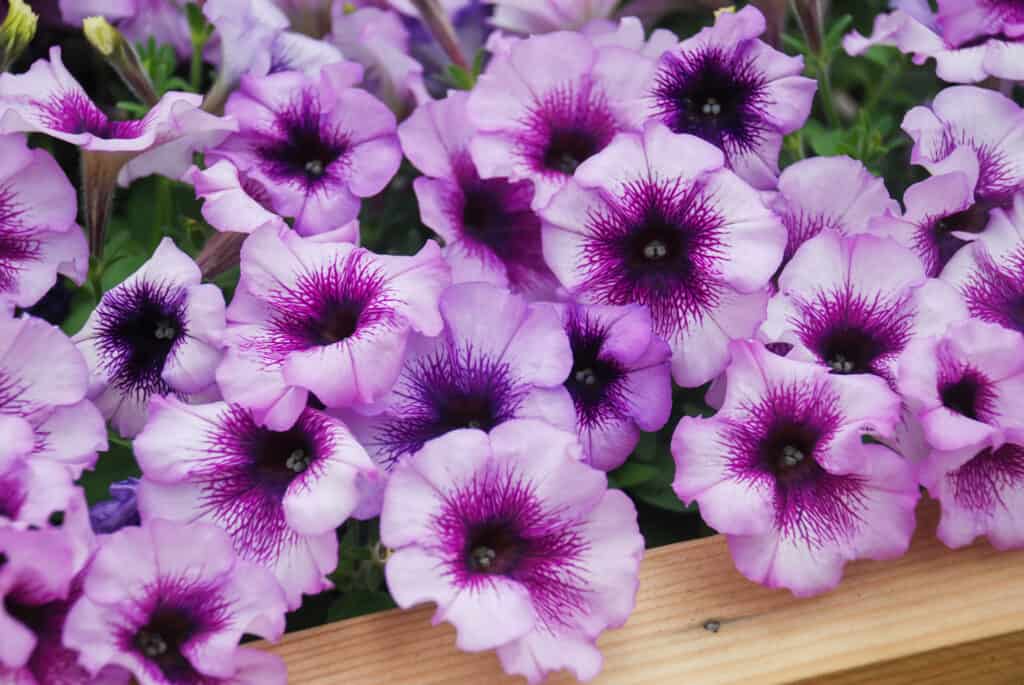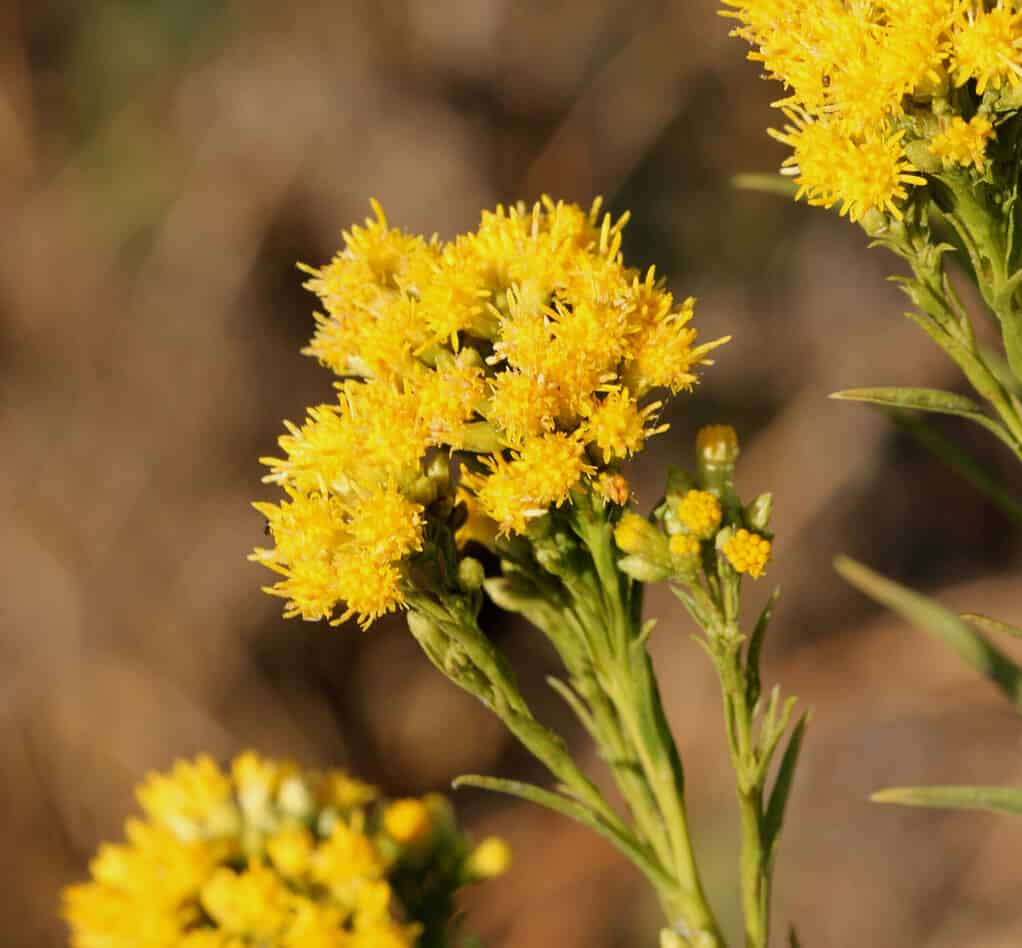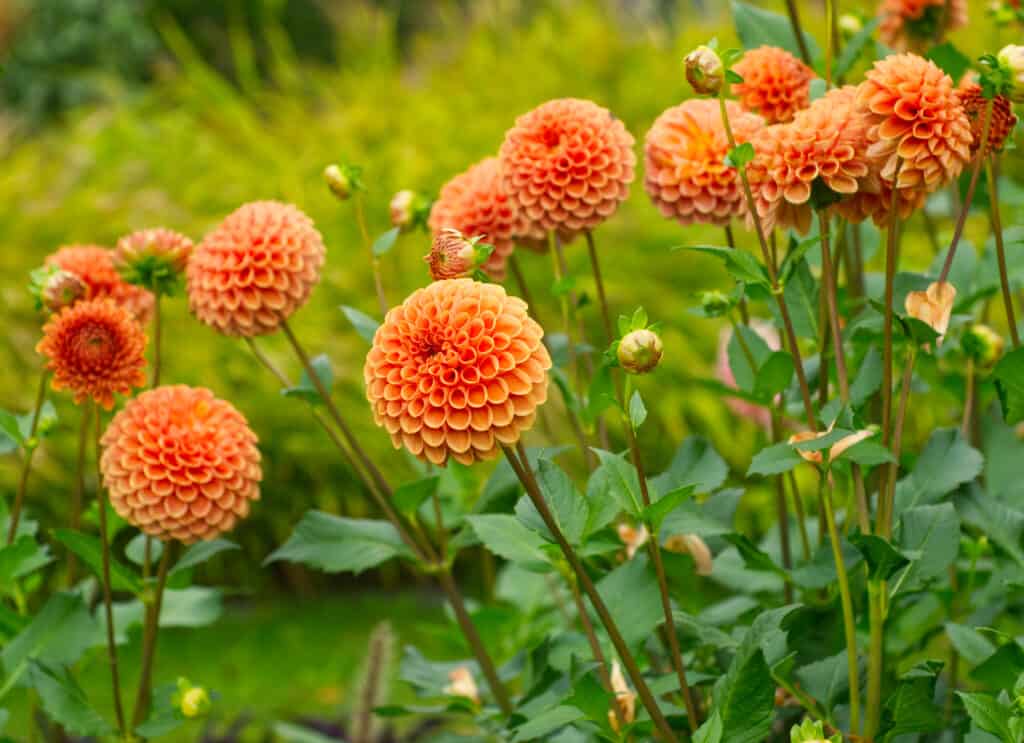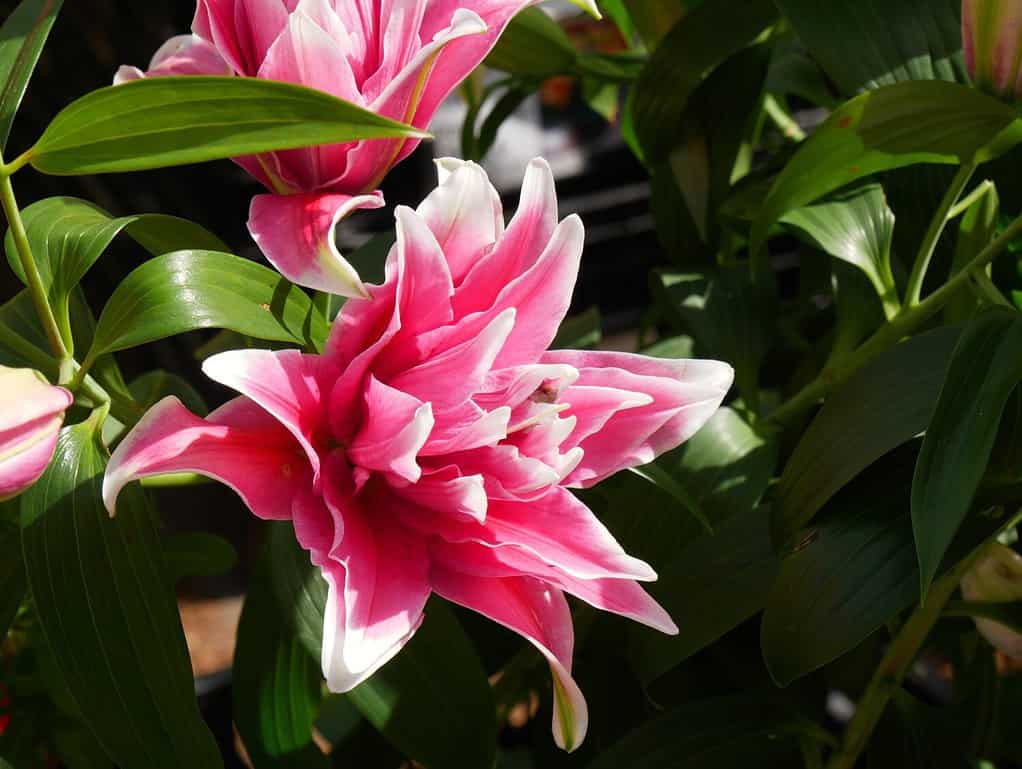Montana’s USDA growing zones range from 3 to 6. Fall is an excellent time to grow leafy greens and cool-weather plants, but which flowers bloom during these few months before the cold and brutal winter? Follow along to discover the 6 most colorful fall-blooming flowers in Montana.
1. Petunias

There are hundreds of cultivars of petunias in the world.
©Yui Yuize/Shutterstock.com
Petunias are a genus of over 20 beautiful flowers native to South America. Although they aren’t native to Montana, they grow well in the state. These gorgeous plants produce red, pink, purple, blue, red, white, and black flowers. They are also sometimes multi-colored. Petunias bloom from early spring to the end of September or sometimes early November. They grow well in containers and on the ground.
2. Goldenrods

There are over 100 species of goldenrods throughout the world. Most are native to North America.
©Gurcharan Singh/Shutterstock.com
Next on our list of the most colorful fall-blooming flowers in Montana is the goldenrod. Goldenrods, like petunias, is a genus of flowering plants in the family Asteraceae. There are well over 100 species. Most produce large clusters of small and vibrant yellow flowers. These lovely flowers are mostly native to North America, although some grow in Europe and Asia. In North America, they are especially common in the eastern United States. So, when do goldenrods bloom? Goldenrod flowers have a wide blooming time but typically flower in late summer and early fall. A common native species to Montana is the giant goldenrod, which can reach impressive heights of up to 3 feet!
3. Dahlias

Dahlias come in many varieties! There are at least 40 naturally occurring species, and many more hybrids and cultivars.
©Sve_M/Shutterstock.com
Another gorgeous fall-blooming flower you can find in Montana is the dahlia. The dahlia, like the previous two other plants, is a genus of stunning and showy flowering plants. This genus belongs to the Asteraceae family, like chrysanthemums, zinnias, and daisies. It’s hard to pinpoint just how many species exist, but there are at least 40! There are even more hybrids and cultivars that range in size and color. Although dahlia flowers aren’t native to Montana, they are common garden flowers. Dahlia plants begin flowering about 8 weeks after planting, which is typically in the middle of the summer. The blossoms remain and continue blooming until early fall, or right before the first frost of the season.
4. Lilies

Lilies have a wide range. They can reach about 2 to 6 feet tall and produce showy flowers.
©Batest/Shutterstock.com
Lilies also produce jaw-dropping beautiful fall blooms in Montana. This large genus of herbaceous flowering plants produces showy flowers. They are native to the Northern Hemisphere. Lilies vary a lot in size and appearance. They are generally about 2 to 6 feet tall and grow from thick underground bulbs. In Montana, you can find and grow many types of lilies. One lily species that is native to Montana is the Gunnison’s Mariposa Lily. It’s native to the western U.S.A. in the Rocky Mountains and Black Hills. However, some lily species make great houseplants and aren’t native to Montana. For instance, you can grow Easter lilies indoors. Although a common houseplant, it’s native to the Ryukyu Islands of southern Japan.
5. Pansies

Pansies are beautiful, showy flowers. There are easily over 400 types ranging in color and size. Some are more heat tolerant than others.
©Michkasova Elena/Shutterstock.com
Another fall-blooming flower to make it on our list is the pansy. Pansies are tricky to grow in Montana as they can’t sustain below-freezing temperatures or snow. Pansies, also known as garden pansies, are popular flowers often planted in gardens for spring and summer, although they can bloom into early fall. The blooming season depends though on the species and the weather. Some pansies stop flowering during summer. This lovely plant produces large showy flowers ranging in colors and patterns. These multi-colored flowers can be purple, red, black, white, yellow, pink, or blue.
6. Coneflowers

Multiple coneflower species live and thrive in Montana including the narrow-leaved purple coneflower.
©iStock.com/Jasmina81
Also in Montana are coneflower. These large, daisy-like plants are native to eastern and central North America. A common late-season, herbaceous perennial in Montana is the upright prairie coneflower, sometimes shortened to the prairie coneflower. These dazzling flowers can grow up to 3 feet tall. The flowers are typically golden yellow but are sometimes reddish-brown. They bloom in late summer to early fall, typically seeding by late September, sometimes earlier.
Other coneflower species can be found in Montana, although not all are native. The most commonly known coneflower plant produces beautiful purple flowers with bright green leaves, the narrow-leaved purple coneflower. They are favorites for many pollinators including butterflies and bees.
Thank you for reading! Have some feedback for us? Contact the AZ Animals editorial team.








